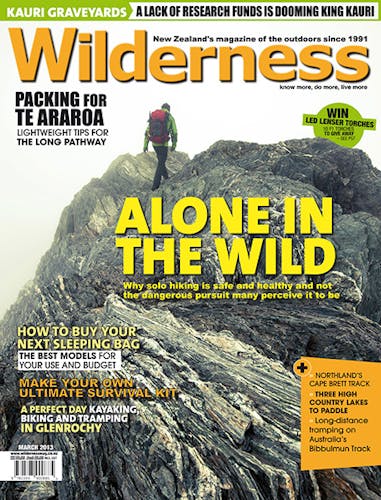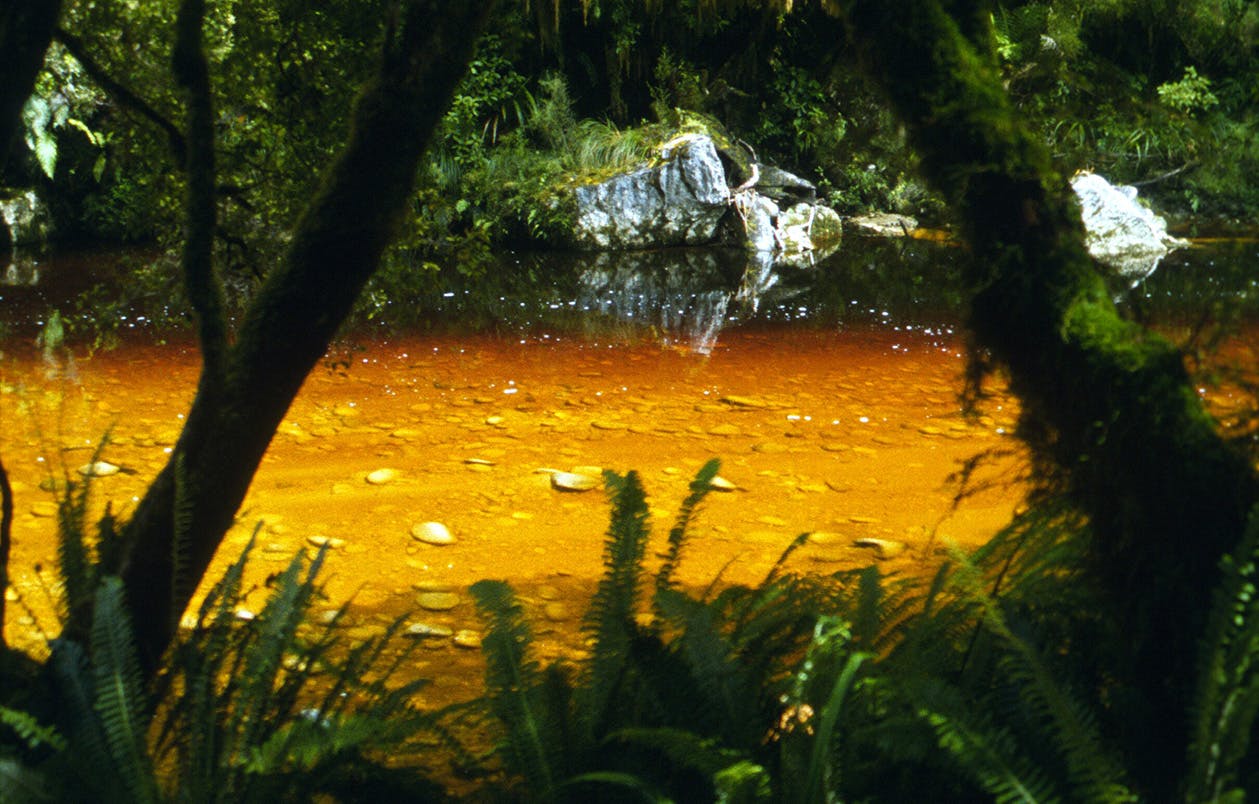Wilderness trips are about more than what is seen; they are about what is sensed, absorbed and assimilated
Up along the Ngamoko Track, just above the shores of Lake Waikaremoana is an ancient rata, whose snake-like trunks twist and turn around each other up to over 40m into the air.
It was Aniwaniwa Tawa at DOC’s Visitor Centre who told us of this rata and of some of its significance. She suggested, once there, we take off our shoes and socks and feel the earth breathing through our feet. “Say hello to your koro, to your ancestors.”
And so we’d taken our time to sit down, then lie down and stare up at this giant.
One thousand years ago, back when moa walked the forest floor, hokioi (Haast’s eagle) soared above it, and the noise from all the birdlife was deafening, this rata – an epiphyte – began life growing in the notch of an already mature rimu. In time, this rata dropped vine-like roots to the ground that, while flimsy at first, took hold to wrap its snake-like trunks around its now long-gone host.
Aniwaniwa had talked of her bond with this forest, and how Ngai Tuhoe had for many years been living in the forests here. “My connection is, I am the forest and the forest is me,” she said, adding: “I am the whenua and the whenua is me.”
Yet for us, half an hour under this rata’s shadow hadn’t been anything like enough time. We left knowing we were witness to something more than we could understand.
Wilderness writers like Edward Abbey and Jack Turner, reckon it takes weeks in the wilds to really tune into nature’s rhythms. It’s only when our watches disappear and each moment is filled up with just the step we’re taking, that we begin to merge into the wild.
I think I agree. For me, while there have been many memorable days in the hills, the most precious are those trips that have been long enough, with vague enough itineraries, and on my own. Journeys where I not only notice a changing landscape, but also a change in me.
For instance, I’ve had three goes at walking to Fiordland’s West Cape. The first was an over-organised affair, complete with planned food drops and nights spent studying maps as I sought to traverse an alternative route to an earlier journey I’d done through Fiordland.
The second attempt was burdened by too many intentions, and too heavy a pack. And so after a week of rain, and very slow progress along the South Coast, I had given it up.
In the end it was the simplest approach that led me there. I’d woken up one day in December, popped into the supermarket, filled my pack with the barest essentials and headed south to camp on Blue Cliffs Beach.
Much of those three weeks seem a blur. Mainly what I recall are the days spent hardly eating as I waited in turn for the Princess Burn, then the Long Burn, and then an unnamed river in Edwardson Sound to become crossable. But also the amazing waterfall that spills around a rata at the mouth of Lake Victor, the tussocky meadows at the head of the Caroline Burn, and the stunted forests around both Mt Inaccessible and West Cape. Where one sunny morning, after three day’s rain, three kaka swooped just out of arm’s reach with calls sweeter than bell birds. Or tripping on a rock I looked up to see a large bird above me, across the river, just as I fell into the water. And primal exhilaration from crossing that small stretch of river that runs between Lake Cadman and the Cora Lynn Falls.
Yet reading these descriptions misses the point. It’s not about what was seen. Rather, what matters is what is sensed. Absorbed, assimilated, empty of ideas.
All this ethereal stuff can seem self-indulgent. Perhaps it is. Yet even the sometimes cantankerous Brian Turner reckons it’s not ‘wimpy’ to consider our backcountry is part of “a grander scheme of things”.
And anyway, regardless of philosophical leanings, longer trips can open up other possibilities. It’s liberating to be able to choose a route on the fly. A couple of summers back I managed to hut-hop my way from Collingwood down to the Rakaia, deciding on the route as I went. Being clear in the hut books as to my route for the next few days, and having a beacon and a good swag of maps, meant I could choose a path according to what was happening during the trip, and not just some plan cooked up before leaving.
I know it’s a little late for New Year’s resolutions, but perhaps there’s room for another challenge this coming year – to put aside not just a weekend here or there, but rather a fortnight or entire month to wander a wilder part of the country.
If a long trip seems daunting it can be easier to think of it as a series of smaller tramps that you’re connecting up. And anyway, once you’re underway, it’s still only made up of the current day’s challenges. It’s important to choose a place you really want to know. With longer walks it’s less about the destination – it’s a chance to move slowly and connect with the other world that’s bundled up in our trees, rivers, lakes and peaks. One whose lives, like that giant rata at Waikaremoana, go further backward and forward in time than we can ever travel ourselves.
And which, in my case anyway, is taking a lifetime and more to take in all the connections made between our forests, our mountains and ourselves.








